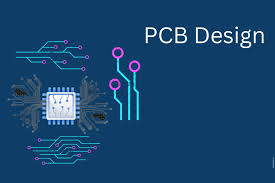Course Duration:10 weeks
Level:
Intermediate to Advanced
Prerequisites:
Basic understanding of electronics, familiarity with circuit components and schematics.
Course Objectives:
- To provide students with a thorough understanding of PCB design concepts, tools, and processes.
- To equip students with hands-on skills for creating schematics, laying out PCB designs, and preparing files for manufacturing.
- To introduce students to design standards, best practices, and quality checks in PCB design.
Course Outline:
Module 1: Introduction to PCB Design
Overview of PCB: What is a PCB? Types of PCBs (single-layer, double-layer, multi-layer).
Applications and Importance: PCBs in various industries like automotive, consumer electronics, medical devices, etc.
Course Scope and Objectives
Module 2: Schematic Design Basics
Understanding Schematic Symbols and Standards: Industry standards (IEEE, IEC) and best practices.
Tools for Schematic Capture: Overview of tools (Altium, KiCad, Eagle, etc.) and tool installation.
Creating Simple Circuits: Hands-on practice with basic schematic capture, and component libraries.
Design Rules and Constraints: Defining requirements based on the circuit’s purpose.
Module 3: Advanced Schematic Design
Component Selection and Sourcing: Choosing appropriate components and creating custom library parts.
Designing for Reliability: Noise reduction, signal integrity, and power management.
Hierarchy in Schematics: Multi-page and multi-sheet schematics for complex designs.
Hands-on Project: Designing a multi-component schematic (e.g., a simple power supply).
Module 4: Introduction to PCB Layout
Layers and Stack-up: Understanding the different layers in a PCB (signal, ground, power, etc.).
Component Placement: Rules for efficient layout, such as grouping components and minimizing trace lengths.
Traces and Routing Basics: Setting width, spacing, and types of routing (manual vs. auto-routing).
Power and Ground Planes: Importance of power planes and effective grounding techniques.
Module 5: Advanced PCB Layout Techniques
High-Speed PCB Design: Techniques for minimizing EMI, managing signal integrity, and controlling impedance.
Thermal Management: Heat dissipation, copper pours, and thermal vias.
Design for Manufacturability (DFM): Guidelines to ensure PCB can be reliably manufactured.
PCB Layout Rules and Constraints: Setting up design rule checks (DRCs) in the software.
Module 6: Verification and Simulation
Schematic and PCB Design Verification: Cross-checking between schematic and PCB layouts.
Simulation Tools and Techniques: Signal integrity analysis, thermal simulations, and basic SPICE simulation.
Hands-on Lab: Simulating a PCB design to identify potential issues before manufacturing.
Module 7: Preparing for Manufacturing
Bill of Materials (BOM) Generation: Automating BOM creation and managing component sourcing.
Gerber File Generation and Verification: Creating and understanding Gerber files, drill files, and assembly files.
Selecting a Manufacturer: Key factors in choosing a PCB manufacturer and an overview of the manufacturing process.
Panelization and Design for Assembly (DFA): Ensuring the board is optimized for assembly processes.
Module 8: PCB Fabrication Process
PCB Manufacturing Steps: Overview of fabrication steps like etching, drilling, solder mask application, and silk-screening.
Quality Control in Manufacturing: Common quality checks and standards (IPC-2221, IPC-6012).
Understanding PCB Materials: Types of substrates, copper weights, and how material choices affect cost and performance.
Hands-on Workshop: Visit a local PCB manufacturer (if feasible) or virtual factory tour.
Module 9: PCB Assembly and Testing
PCB Assembly Overview: Surface-mount and through-hole technology.
Soldering Techniques: Basics of manual and automated soldering processes.
Testing and Troubleshooting PCBs: Using multimeters, oscilloscopes, and test jigs.
Reliability Testing: Environmental tests like thermal cycling, humidity, and mechanical stress tests.
Module 10: Course Project and Final Review
Capstone Project: Design, layout, and prepare a small PCB for manufacturing (e.g., a sensor board, LED driver).
Review and Debugging: Final checks and debugging tips.
Presentation of Designs: Students present their final projects, sharing challenges and solutions.
Feedback and Next Steps: Career guidance in PCB design and areas for further learning.
Course Materials:
- Software Requirements: Access to PCB design software (trial or student licenses may be available).
- Tools: Breadboard, soldering kit, multimeter, oscilloscope (recommended but not mandatory).
- Readings: “Printed Circuits Handbook” by Clyde F. Coombs, “High-Speed Digital Design” by Howard Johnson, and IPC standards for PCB design.
Assessment:
Weekly Assignments and Quizzes: Based on each module’s content.
Midterm Exam: Covering modules 1-5.
Final Exam: Comprehensive exam covering all modules.
Capstone Project: Graded on design, functionality, and presentation.
This course structure will provide a solid foundation in PCB design, preparing students for real-world applications in the electronics industry.
